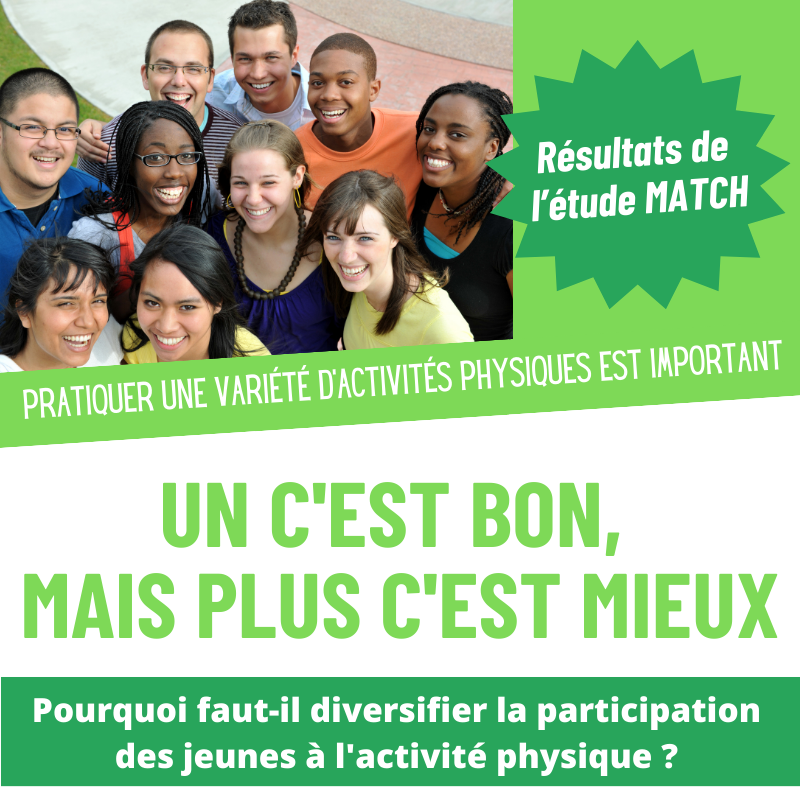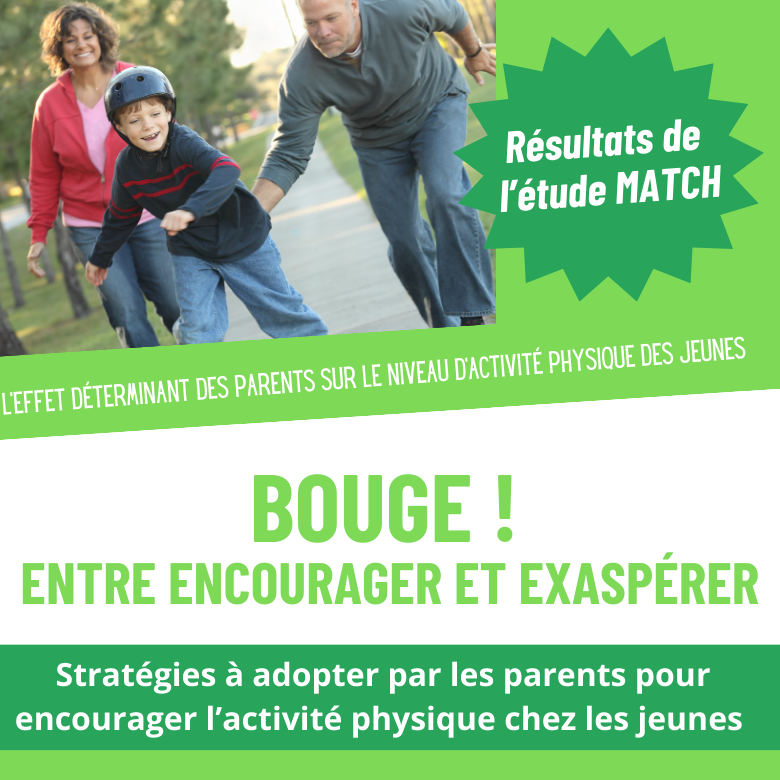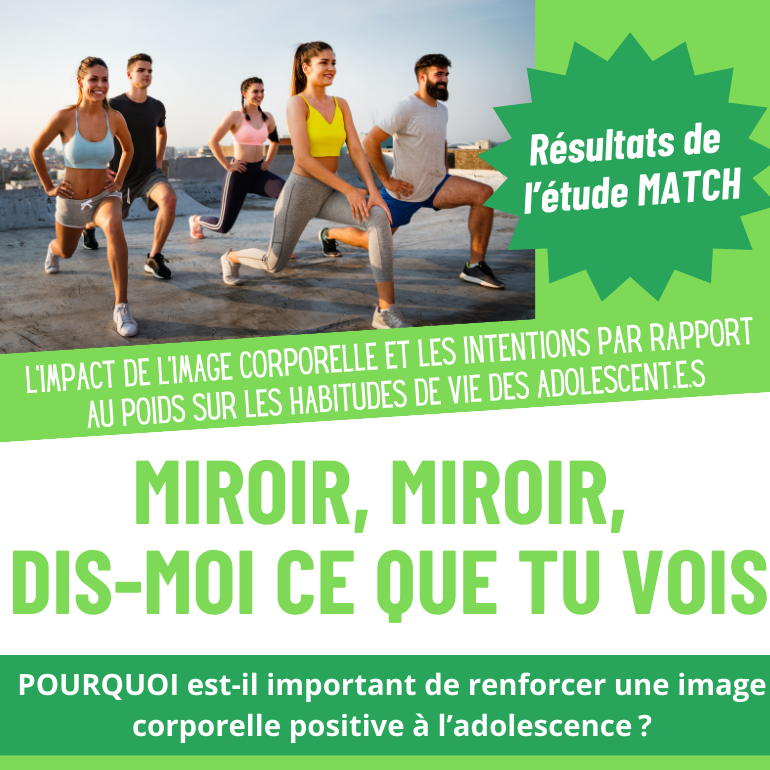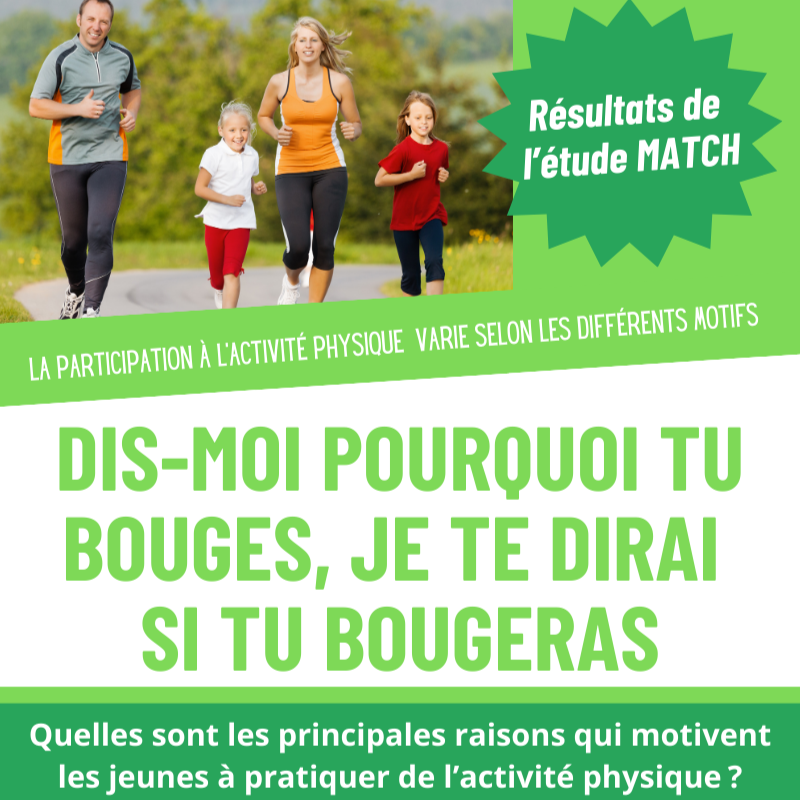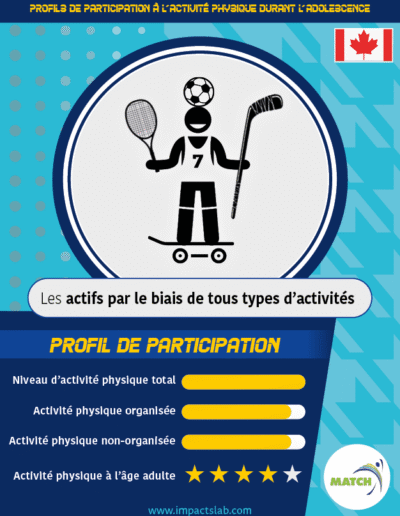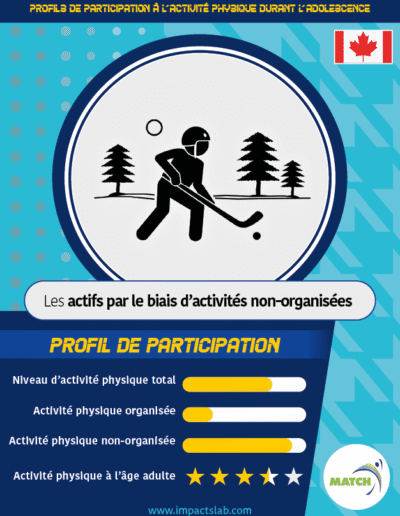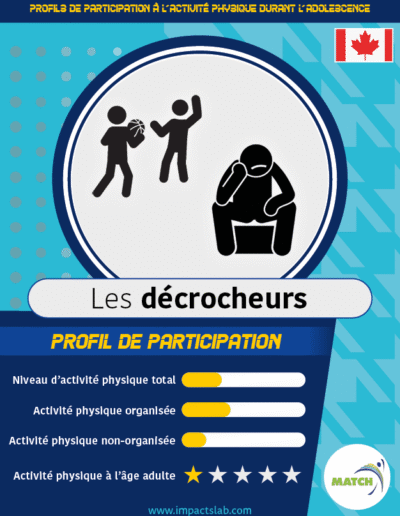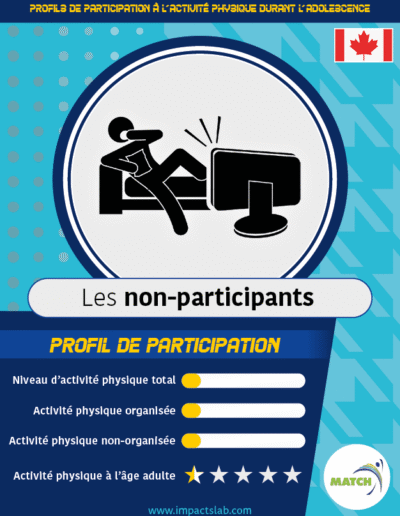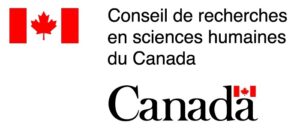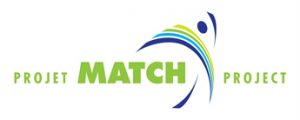 Depuis 2011, l’étude MATCH suit près de 1 000 jeunes. Alors qu’ils étaient âgés de 10 à 12 ans au début de l’étude, ces participants sont maintenant d’âge adulte. En répondant périodiquement à des questionnaires, ils permettent de mieux comprendre comment changent les comportements liés à la santé lors de périodes importantes de la vie.
Depuis 2011, l’étude MATCH suit près de 1 000 jeunes. Alors qu’ils étaient âgés de 10 à 12 ans au début de l’étude, ces participants sont maintenant d’âge adulte. En répondant périodiquement à des questionnaires, ils permettent de mieux comprendre comment changent les comportements liés à la santé lors de périodes importantes de la vie.

Équipe
Chercheur principal : Mathieu Bélanger
Co-chercheurs : Jennifer Brunet, Isabelle Doré, François Gallant, Katie Gunnell, Jennifer O’Loughlin, Catherine Sabiston et Marie-Pierre Sylvestre
Coordonnatrice : Julie Dufresne
Gestionnaire de base de données : Jeffrey Gaudet
Étudiants (passés et présents) : Jean-Sébastien Chevarie, Sara DeGrâce, Yanis Saheb, Maryse Gagnon, Emilie Beaulieu, Marie-Claude Lavigne-Albert, Marie-Andrée Giroux, Anika Boucher, Katarina Laevski, Sarah-Maude Boucher, Pascale Plourde Roussel et Valerie Dery (MD-Sherbrooke), Julie Goguen (MSc-Sherbrooke), Jason MacKenzie (MSc-Sherbrooke), Erin Wing (MSc-Ottawa), Stéphanie Ward (MSc-Sherbrooke), François Gallant (MSc-Sherbrooke), Teodora Riglea (MSc-Montréal), Marie-Ève Michaud (MSc-Sherbrooke), Jean-François Clément (MSc-Sherbrooke), Chloé Drapeau (MSc-Montréal), Kristy Smith (PhD-Windsor), Véronique Thibault (PhD-Sherbrooke), François Gallant (PhD-Sherbrooke), Pierre Philippe Wilson Registe (PhD-Sherbrooke) et Salma Jemaa (PhD-Sherbrooke)
Stagiaires postdoctoraux (passés et présents) : Katie Gunnell (Ottawa), Patrick Abi Nader (Sherbrooke), Isabelle Doré (Toronto), Jodie Stearns (Ottawa), Radhouene Doggui (Sherbrooke), Ross Murray (Toronto), Corentin Montiel (Montréal), Lars Lenze (Bern), Charles-Étienne White-Gosselin (Montréal)
Résultats de l'étude MATCH
Les données de l’étude ont mené à plusieurs découvertes sur plusieurs sujets. Voici un sommaire de certain de ces résultats :
L’IMPORTANCE DE PRATIQUER UNE VARIÉTÉ D’ACTIVITÉS PHYSIQUES
- Les jeunes qui pratiquent une grande variété d’activités physiques ont plus de chances de demeurer actifs en vieillissant.
- Essayer une grande variété d’activités physiques permet de découvrir et de développer des intérêts variés.
- Les jeunes qui se spécialisent dans un seul sport risquent davantage d’abandonner toute activité physique.
L’INFLUENCE DES PARENTS SUR LE NIVEAU D’ACTIVITÉ PHYSIQUE DES JEUNES
- Les parents ont un effet déterminant sur le niveau d’activité des jeunes à court et long terme.
- Les jeunes qui peuvent compter sur un soutien concret et tangible de leurs parents (accompagner aux entraînements, payer les frais liés, fournir l’équipement, etc.) sont plus susceptibles de maintenir un plus haut niveau d’activité physique pendant plusieurs années.
- Prêcher par l’exemple fonctionne. Les enfants dont les parents pratiquent des sports moins populaires (ex. escalade, ultimate frisbee, etc.) sont plus enclins à explorer ces disciplines.

L’INFLUENCE DE l’ENVIRONNEMENT BÂTI
- La présence d’infrastructures (pistes cyclables, parcs avec installations polyvalentes, sentiers) et un environnement scolaire adapté (supports à vélo, brigadiers scolaires, programmes de transports actifs, etc.) favorisent la pratique de l’activité physique.
LA SANTÉ MENTALE ET L’ACTIVITÉ PHYSIQUE
- Plus les jeunes participent à des activités physiques, plus ils rapportent avoir une santé mentale positive et une bonne qualité de vie.
- Les jeunes qui ont pratiqué plus d’activités physiques pendant l’adolescence sont plus nombreux à utiliser l’activité physique comme stratégie de gestion de stress et ont ainsi rapporté de meilleurs niveaux de santé mentale pendant la pandémie de la COVID-19.
- L’activité physique pratiquée à l’adolescence continue d’avoir des effets positifs sur la santé mentale des jeunes adultes.
- 66 % des jeunes canadiens et canadiennes ne pratiquent pas d’activités physiques sur une base régulière et ne peuvent donc pas profiter de cet outil pour la gestion de leur stress.
- Lorsque les individus deviennent plus actifs, leur qualité de vie physique et sociale s’en trouve améliorée.
- La satisfaction de trois besoins psychologiques — interactions sociales positives, sentiment de compétence et sentiment d’autonomie — favorise la pratique régulière de l’activité physique.
L’IMAGE CORPORELLE ET LES HABITUDES DE VIE
- Des niveaux plus élevés de honte, de culpabilité et d’embarras liés à l’image corporelle sont liés à une plus grande diminution de l’activité physique.
- Les adolescent.e.s qui disent vouloir perdre du poids présentent généralement de moins bonnes habitudes de vie ; plus de temps d’écran, plus de consommation de boissons sucrées, et moins d’activité physique.
- Un niveau plus élevé de fierté par rapport à son image corporelle est lié à un plus haut niveau d’activité physique tout au long de l’adolescence.
LES MOTIVATIONS ET L’ACTIVITÉ PHYSIQUE
- Les enfants qui font de l’activité physique par plaisir participent davantage à des activités physiques organisées.
- Ceux qui souhaitent améliorer leurs habiletés participent plus souvent à des activités physiques en groupe et atteignent plus souvent les niveaux recommandés d’activité physique quotidienne.
- Chez les garçons, les motifs de plaisir sont liés positivement à l’activité physique, tandis que les motifs de forme physique le sont négativement.
- Chez les filles, ce sont les motifs de compétence qui sont associés à une plus grande participation.
- Bien que les jeunes rencontrent des barrières internes (ex.: manque d’intérêt) et externes (ex. : manque d’équipement), seules les barrières internes sont susceptibles de freiner leur engagement dans l’activité physique.
LES PROFILS DE PRATIQUE D’ACTIVITÉ PHYSIQUE
Les adolescents qui pratiquent plusieurs types d’activités physiques, qu’elles soient organisées ou non, sont généralement plus actifs une fois devenus adultes. Ce profil « multisports » semble plus bénéfique que celui des jeunes engagés dans un seul sport organisé, une forme de spécialisation souvent déconseillée.
Cette diversité d’expériences sportives aide les jeunes à développer leur autonomie et leur confiance pour rester actifs, même en dehors de structures formelles. De plus, les adolescents ayant pratiqué une variété de sports sont aussi plus enclins à utiliser l’activité physique comme moyen de faire face au stress, ce qui est associé à une meilleure santé mentale à l’âge adulte.
En résumé, la diversité et la flexibilité des pratiques sportives à l’adolescence semblent être des facteurs clés pour une vie active et une bonne santé mentale à long terme.
Publications scientifiques
| Articles | Savoirs URL |
|---|---|
| 41. Montiel, C., Comtois-Cabana, D., Bélanger, M., & Doré, I. (2025). Is It the Walk or the Park? Exploring Associations Between Exposure to Nature in General and Through Physical Activity and Positive Mental Health in Young Adults in Canada. Journal of Physical Activity and Health, 1(aop), 1–7. https://doi.org/10.1123/jpah.2025-0349 | À venir / coming soon |
| 40. Registe, P. P. W., Jemaa, S., Mekari, S., Sylvestre, M.-P., Brodeur, M., & Bélanger, M. (2025). The timing or accumulation of physical activity during adolescence: Which better predicts positive mental health and quality of life in early adulthood? Mental Health and Physical Activity, 29, 100727. https://doi.org/10.1016/j.mhpa.2025.100727 | À venir / coming soon |
| 39. Bélanger, M., Registe, P. P. W., Faivre, P., Tanguay, P., Jemaa, S., Gallant, F., Giroux, M.-A., Thibault, V., Hakim, J., Clément, J.-F., & Mekary, S. (2025). Are technologies designed to support physical activity really helping young adults be active? A four-year longitudinal study. Journal of Behavioral Medicine, 48(6), 984–994. https://doi.org/10.1007/s10865-025-00611-9 | À venir / coming soon |
| 38. Bélanger, M., Giroux, MA., Registe, P.P.W. et al. Adolescent physical activity profiles as determinants of emerging adults’ physical activity. Int J Behav Nutr Phys Act 22, 35 (2025). | https://hdl.handle.net/11143/23218 |
| 37. Gallant, F., Giroux, M.A., Registe, P.P.W., Mekari, S., Doré, I., Sabiston, C., Bélanger, M. (2024). Basic psychological need satisfaction as correlates of physical activity trajectories during adolescence. Scandinavian Journal of Medicine and Science in Sports, 34:e14743. | http://hdl.handle.net/11143/22181 |
| 36. O’Loughlin, E. K., Sabiston, C. M., Riglea, T., Naja, M., Bélanger, M., Wellman, R. J., Sylvestre, M. P., & O’Loughlin, J. L. (2024). Exergaming in young adults: Natural course and predictors of sustained exergaming. Games for Health Journal. Accepted September 5th, 2024.1. | À venir / coming soon |
| 35. Bélanger, M., Goguen, J., Beauchamp, J., Gallant, F., Boucher, A., Chevarie, J.S., DeGrace, S., Saheb, Y., Gagnon, M., Doré, I., Sabiston, C.M. (2024). Identification of distinct physical activity profiles through adolescence: a longitudinal qualitative description study. Frontiers in Sports and Active Living. Volume 6 – 2024 | | À venir / coming soon |
| 34. O’Loughlin, E., Sabiston, C.M., Riglea, T., Naja, M., Bélanger, M., Wellman, R., Sylvestre, M.P., O’Loughlin, J. (2024). Natural course and predictors of sustained exergaming in young adults. Games for Health Journal. | À venir / coming soon |
| 33. Clément, JF., Gallant, F., Hudon, C. Montiel, C., Riglea, T., Berbiche, D., Doré, I., Sylvestre, MP., O’Loughlin, J., Bélanger, M. (2024) Use of physical activity as a coping strategy mediates the association between adolescent team sports participation and emerging adult mental health. | http://hdl.handle.net/11143/21705 |
| 32. Murray, R., Sabiston, C.M., Doré, I., Sylvester, B., Bélanger, M. (2024) Does participating in a variety of activities, locations, or different people predict physical activity behaviour among adolescents? The mediating role of perceived variety. | http://hdl.handle.net/11143/21704 |
| 31. Thibault, V., Gallant, F., Paiement, K., Ward Chiasson, S., Lemieux, S., Abi Nader, P., Bélanger, M. (2023). A Canadian longitudinal study of the associations between weight control status and lifestyle behaviors during adolescence. | http://hdl.handle.net/11143/21703 |
| 30. Thibault, V., Gallant, F., Sylvestre, M.P., Drapeau, V., Doré, I., Sabiston, C., Bélanger, M. (2023). Longitudinal associations between body-related self-conscious emotions and weight control status during adolescence. Journal of Adolescent Health. | http://hdl.handle.net/11143/20808 |
| 29. Gallant, F., Hebert, J., Thibault, V., Mekari, S., Sabiston, C.M., Bélanger, M. (2023). Puberty timing and relative age as predictors of physical activity discontinuation during adolescence. Scientific Reports | http://hdl.handle.net/11143/20809 |
| 28. Sabiston, C.M., Doré, I., Lucibello, K.M., Pila, E., Brunet, J., Thibault, V., Bélanger, M. (2022). Body image self-conscious emotions get worse throughout adolescence and relate to physical activity behavior in girls and boys. Social Science & Medicine, vol. 315, December 2022, article 115543, 9 p. | http://hdl.handle.net/11143/20812 |
| 27. Gallant, F., Murray, R.M., Sabiston, C.M., Bélanger, M. (2022). Description of sport participation profiles and transitions across profiles during adolescence. Journal of Sports Sciences, vol. 40, no 16, p. 1824-1836 | http://hdl.handle.net/11143/20810 |
| 26. Smith, K. L., Bélanger, M., Chittle, L., Dixon, J. C., Horton, S., & Weir, P. L. (2022). Does Relative Age Influence Organized Sport and Unorganized Physical Activity Participation in a Cohort of Adolescents? Sports, 10(7), 97. | http://hdl.handle.net/11143/20792 |
| 25. Doggui, R., Ward, S., Johnson, C., Bélanger, M. (2022). Trajectories of beverage consumption during adolescence. Appetite. | http://hdl.handle.net/11143/20794 |
| 24.Doré I, Thibault V, Sylvestre MP, Sabiston CM, O’Loughlin J, Abi Nader P, Romain AJ, Brunet J, Bélanger M. (2022). Physical activity motives have a direct effect on mental health, Scandinavian Journal of Medicine & Science in Sports. | http://hdl.handle.net/11143/20811 |
| 23. Stearns, J., Bélanger, M., O’Loughlin, J., Brunet, J. (2022). Change in the social context of physical activity across adolescence and its association with moderate-to-vigorous intensity physical activity. Psychology of Sport and Exercise. | http://hdl.handle.net/11143/20800 |
| 22. Abi Nader, P., Gaudet, J., Brunet, J., Gunnell, K., Dore, I., Sabiston, C.M., Boudreau, J., Bélanger, M. (2021). Associations between Physical Activity Motives and Trends in Moderate-to-Vigorous Physical Activity Among Adolescents Over Five Years. Journal of Sports Sciences. 1-14. | http://hdl.handle.net/11143/20798 |
| 21. Doggui, R., Ward, S., Johnson, C., Bélanger, M. (2021). Trajectories of eating behaviour changes during adolescence. Nutrients, Volume 13, Issue 4, | http://hdl.handle.net/11143/20793 |
| 20. Doggui, R., Gallant, F., Bélanger, M. (2021). Parental control and support for physical activity predict adolescents’ moderate to vigorous physical activity over five years. International Journal of Behavioral Nutrition and Physical Activity, 18(1), 1-10. | http://hdl.handle.net/11143/20796 |
| 19. *Riglea, T., Dore, I., O’Loughlin, J., Bélanger, M., Sylvestre, M.P. (2021). Contemporaneous trajectories of physical activity and screen time in adolescents. Applied Physiology, Nutrition, and Metabolism. 2021 Jun;46(6):676-684. | http://hdl.handle.net/11143/20799 |
| 18 Gallant, F, Thibault, V., Hebert, J., Gunnell, K., Bélanger, M. (2020). One size does not fit all: Identifying clusters of physical activity, screen time, and sleep behaviour co-development from childhood to adolescence. International Journal of Behavioral Nutrition and Physical Activity. 17, Article number: 58. | http://hdl.handle.net/11143/20773 |
| 17. Doré, I., Sylvester, B., Sylvestre, MP., Sabiston, C., O’Loughlin, J., Brunet, J., Bélanger, M. (2020). Mechanisms underpinning the association between group sport participation and mental health in adolescence: A 6-year study. International Journal of Behavioral Nutrition and Physical Activity. 17, 9. | http://hdl.handle.net/11143/20795 |
| 16. Larouche, R., Gunnell, K., Bélanger, M. (2019) Seasonal variations and changes in school travel mode from childhood to late adolescence: a prospective study in New Brunswick, Canada. Journal of Transport & Health. 12, 371-378. | http://hdl.handle.net/11143/20790 |
| 15. Bélanger, M., Gallant, F., Abi Nader, P., O’Loughlin, J., Sabiston, C., Doré, I., Gunnell, K., Larouche, R., Sylvestre, MP. (2019). Physical activity mediates the relationship between outdoor time and mental health. Preventive Medicine Reports. 36. | http://hdl.handle.net/11143/20774 |
| 14. Doré, I., Sabiston C., Sylvestre, MP., Brunet, J., O’Loughlin, J., Abi Nader, P., Gallant, F., Bélanger M. (2019). Years participating in sports during childhood predicts mental health in adolescence: A 5-year longitudinal study. Journal of Adolescent Health, 64, 790-796. | http://hdl.handle.net/11143/20775 |
| 13. Brunet, J., Gaudet, J., Wing, E., Bélanger, M. (2019). Parents’ participation in physical activity predicts maintenance of some, but not all types of physical activity in offspring during early adolescence: A prospective longitudinal study. Journal of Sport and Health Science. | http://hdl.handle.net/11143/20772 |
| 12. Abi Nader, P., Ward, S., Eltonsy, S., Bélanger, M. (2018). The Impact of Life Stresses on Physical Activity Participation during Adolescence: a 5-Years Longitudinal Study. Preventive Medicine. 116:6–12 | http://hdl.handle.net/11143/20788 |
| 11. Gunnell K. E., Brunet, J., Bélanger, M. (2018) Out with the old, in with the new: Assessing change in screen time when measurement changes over time. Preventive Medicine Reports | http://hdl.handle.net/11143/20776 |
| 10. Gallant, F., O’Loughlin, J., Brunet, J., Sabiston, C., Bélanger, M. (2017). Childhood Sport Participation Profile Predicts Adolescent Sport Profile. Pediatrics. | http://hdl.handle.net/11143/20815 |
| 9. Gunnell, K. E., Brunet, J., Sabiston, C. M., Bélanger, M. (2016). Linking psychological need satisfaction and physical activity to health-related quality of life during adolescence: A test of direct, reciprocal, and mediating effects. Journal of Sport & Exercise Psychology, 38, 367-380. | http://hdl.handle.net/11143/11261 |
| 8. Brunet J., Gunnell, K. E., Teixeira, P., Sabiston, C. M., Bélanger, M. (2016). Should we be looking at the forest or the trees? Overall psychological needs satisfaction and individual needs as predictors of physical activity. Journal of Sport & Exercise Psychology, 38, 317-330. | http://hdl.handle.net/11143/20797 |
| 7. Wing, E.K., Bélanger, M., Brunet, J. (2016). Linking Parental Influences and Youth Participation in Physical Activity In- and Out-of-School: The Mediating Role of Self-Efficacy and Enjoyment. American Journal of Health Behavior, 40(1): 31-37. | http://hdl.handle.net/11143/20816 |
| 6. Gunnell, K. E., Brunet, J., Bélanger, M. (2015). A Tale of Two Models: Changes in Psychological Need Satisfaction and Physical Activity over 3 Years. Health Psychology. | http://hdl.handle.net/11143/13226 |
| 5. Goguen Carpenter, J., Bélanger, M., Xhignesse, M., Ward, S., Caissie, I., Sabiston, C., O’Loughlin, J. (2015). Association between physical activity motives and type of physical activity in children. International Journal of Sport and Exercise Psychology,1-15. | http://hdl.handle.net/11143/11276 |
| 4. MacKenzie, J., Brunet, J., Boudreau, J., Iancu, H.D., Bélanger, M. (2015). Does Proximity to physical activity infrastructures predict maintenance of organized and unorganized physical activities in youth? Preventive Medicine Reports, 2: 777-782. | http://hdl.handle.net/11143/20789 |
| 3. Ward, S., Bélanger, M., Goguen, J., Caissie, I., Vanasse, A., Donovan, D. (2015). Association between school policies and built environment, and youth’s participation in various types of physical activities. Journal of School Health, 85(7): 423. | http://hdl.handle.net/11143/20791 |
| 2. Gunnell, K.E., Brunet, J., Wing, E.K., Bélanger, M. (2015). Measuring perceived barriers to physical activity in adolescents. Pediatric Exercise Science. 27: 252-261. | http://hdl.handle.net/11143/21194 |
| 1. Bélanger, M., Caissie, I., Beauchamp, J., O’Loughlin, J., Sabiston, C., & Mancuso, M. (2013). Monitoring activities of teenagers to comprehend their habits: study protocol for a mixed-methods cohort study. BMC public health, 13: 649 | http://hdl.handle.net/11143/20744 |
Accès aux données de l’étude MATCH
Pour plus de renseignements sur le processus par lequel les chercheurs peuvent initier un accord de partage de données, veuillez consulter la page suivante : partage de données MATCH
Information
Pour toute information sur le projet MATCH, veuillez contacter Julie Dufresne, coordonnatrice de recherche à julie.dufresne2@usherbrooke.ca
